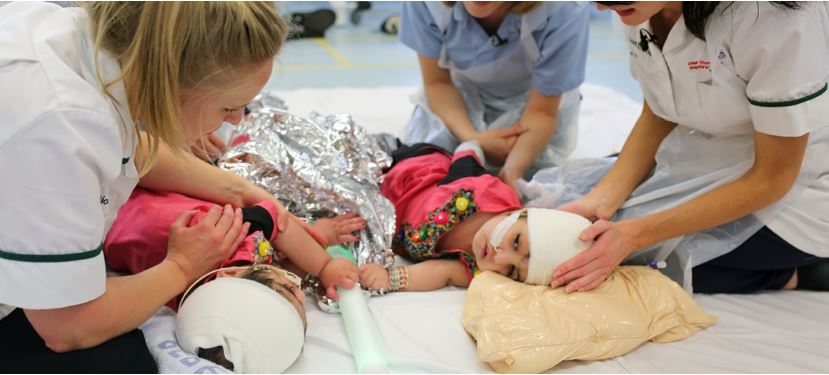
Conjoined Twins Fused at the Head Now Separated After More Than 50 Hours of Surgery

Twin girls who were born joined at the head have been successfully separated after a months-long medical endeavor that required more than 50 hours of major surgery and a team of 100 medical professionals, doctors announced this week.
The 2-year-old twins, Safa and Marwa Ullah, were born with an extremely rare condition called craniopagus, which means they shared a portion of their skull and brain tissue, according to Great Ormond Street Hospital (GOSH) in London, the facility where the separation surgery was performed.
Conjoined twins are very rare to begin with, occurring at a rate of about 1 in 2.5 million births worldwide, and of these, only about 5% are craniopagus, the hospital said in a statement.
The twins were brought from their home in Pakistan to GOSH when they were 19 months old. They required three major operations that took place from October 2018 to February 2019, the statement said. The girls' recovery took time, and they were finally well enough to leave the hospital on July 1, according to The New York Times.
Surgeries to separate craniopagus twins are complex and challenging, and they need to be broken down into a series of smaller steps, the hospital said.
For the first several procedures, doctors focus on separating the twins' brains and blood vessels, and then doctors insert a piece of plastic to separate the two brains. Next, during another procedure, the skulls must be separated and the tops of their heads reconstructed with the twins' own bone and skin.
To aid in planning the surgeries, doctors created a replica of the twins' anatomy with virtual-reality technology, and they also used 3D-printed plastic models of the twins' brains, skulls and blood vessels to practice the surgery.
Sign up for the Live Science daily newsletter now
Get the world’s most fascinating discoveries delivered straight to your inbox.
"We are delighted we have been able to help Safa and Marwa and their family. It has been a long and complex journey for them, and for the clinical team looking after them," Dr. Noor ul Owase Jeelani, former head of neurosurgery at GOSH, and Dr. David Dunaway, head of the Craniofacial Unit at GOSH, who together led the girls' surgery, said in a statement.
The hospital separated two other sets of craniopagus twins, in 2006 and 2011.
- Seeing Double: 8 Fascinating Facts About Twins
- The 9 Most Interesting Transplants
- 11 Big Fat Pregnancy Myths
Originally published on Live Science.

Rachael is a Live Science contributor, and was a former channel editor and senior writer for Live Science between 2010 and 2022. She has a master's degree in journalism from New York University's Science, Health and Environmental Reporting Program. She also holds a B.S. in molecular biology and an M.S. in biology from the University of California, San Diego. Her work has appeared in Scienceline, The Washington Post and Scientific American.










